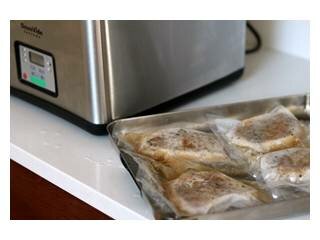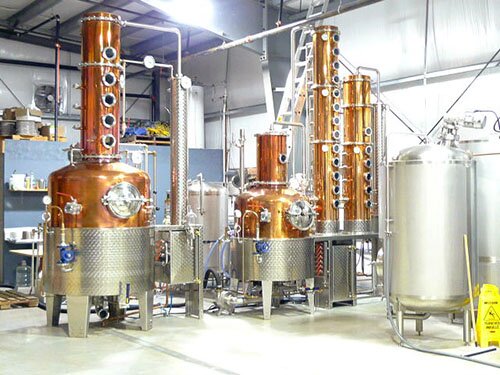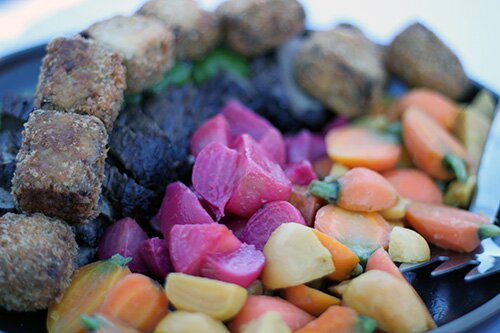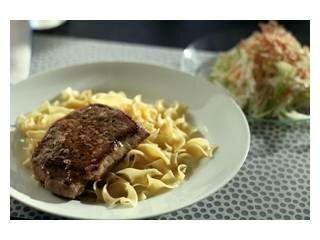Jay Friedman

About Jay Friedman:
Last Login: |
1 day ago |
Joined: |
August 02, 2010 |
Profile viewed: |
173 times |
Total Audience: |
10424 views |
Storiesby Jay Friedman |
Viewing Stories 21 - 29 of 29
|
View by List | Grid |
Suddenly, it’s September, and though summer seems to be slipping away, here’s perhaps one last chance to salvage some sunny vibes.
Sunday, September 12, will be the fourth annual Seattle Chefs Collaborative Urban Picnic, from 1-4 p.m. at the Rainier Square Rooftop Courtyard in Downtown Seattle (between University and Union on Fourth Avenue).
Chefs Collaborative, founded in 1993, is a national network of more than 1,000 members of the food community who promote sustainable cuisine by celebrating the joys of cooking local, seasonal, and artisan foods.
This mission is reflected in the food of the day, as you can expect stellar bites from:
- Maria Hines, Tilth
- Jason Franey, Canlis
- John Sundstrom, Lark
- Ethan Stowell, Anchovies & Olives
- Seth Caswell, emmer&rye
- Kären Jurgensen, Quillisascut Farm
- Rachel Yang, Joule
- Riley Starks, Willow’s Inn
- Dan Braun, Oliver’s Twist
- Autumn Martin, Hot Cakes
- Tara Ayers, Ocho
Country band Carrie Cunningham and the Six Shooters will provide live entertainment for this casual and high-spirited event.
Admission is $60 (purchase tickets at Brown Paper Tickets), with free entry for children under 10. Note that Urban Picnic is an annual fundraiser for scholarships to the Quillisascut Farm School, a fountain of knowledge for many of our local culinary stars.
Picnic-goers are asked bring their own picnic gear (plates, utensils, cups, picnic blankets, etc.), although plates, silverware and cups will be provided. Local wine, beer and other beverages are also included in the price of admission. With past Iron Chef participants and other acclaimed chefs serving up some specialties, Urban Picnic promises to be a tasty affair.
 Pork chops ready for sous vide bath
Pork chops ready for sous vide bath
We've come a long way since the boil-in-a-bag lunches of chicken à la king I enjoyed as a kid back in the Seventies.
But for this collector of kitchen gadgets, I feel like I've come full circle with a Sous Vide Supreme (and vacuum sealer for the bags) sitting on my kitchen counter.
Note the location. While my four waffle irons, three woks, and much more are stored away safely in the pantry, this monster of a machine must sit out, taking up valuable real estate in my favorite room in the house.
That said, I've been delighted to have an opportunity to demo a unit, and to learn more about the style of cooking (based on precise cooking temperatures) that's the rage in restaurants--and now in some homes--of late.
I started with the simplest of recipes, a basic chicken breast preparation, and was pleased with the moistness of the meat, though I definitely appreciated the quick searing at the end of the cooking process. A few other meat preparations yielded similar results, including the pictured pork chops, though I can see how some people might initially question the texture of the finished product.
There are many pros to sous vide cooking, such as a fail-proof formula when following recipes (cooking times are forgiving, so it's hard to dry out meats), fairly quick clean-up, the need to do advanced planning as called for by cooking times.
One of the cons: the need to do advanced planning as called for by cooking times. 72-hour ribs? How many of us can even think past the next 24 hours? (I haven't gotten to a rib recipe, but I hear they’re amazing.)
For those with counter space or other storage options, The Sous Vide Supreme is a tool that might improve or enhance food preparation. (And while I've only discussed meat, you can sous vide fruits, vegetables, and more.) While I appreciate the machine's capabilities, I don’t have the space, and I also enjoy the challenges of time, technique, and more that make cooking in the kitchen so intriguing and educational. There is one thing, though, for which sous vide technique reigns supreme. More on that next time….
As I start posting reports about the local food scene as well as culinary escapes from Seattle, I thought it would be interesting to share a perspective on the sometimes hard-to-define Pacific Northwest cuisine.
I enlisted the help of Lorna Yee, a local food writer who just co-authored The Newlywed Kitchen: Delicious Meals for Couples Cooking Together. Yee has an adventurous appetite and is one of the people in Seattle I most trust for restaurant recommendations.
As someone who's lived in both Vancouver and Seattle and has spent time exploring the food scene in Portland, how would you define Pacific Northwest cuisine?
Pacific Northwest cuisine seems to center around salmon, shellfish, and foraged ingredients like fiddlehead ferns and morels. There's a bit of Asian influence, of course, though Vancouver chefs like Rob Feenie (ex-Lumiere), Seattle chefs like Tom Douglas, and Portland chefs like John Gorham seem to draw inspiration from around the world and apply it to the ingredients most readily found in their hometowns. There doesn't seem to be a "right" or "wrong" way to do things here—we don't have an almost religious (and admirable!) adherence to certain recipes and culinary traditions, like they do in the South. Chefs here are constantly innovating: there's no lack of creativity here in the Pacific Northwest.
Having recently moved to Seattle, how would you refine your definition of Pacific Northwest cuisine to make it more Seattle-specific?
Seattle is an incredibly green city that's focused on sustainability. Shopping at the farmers' market is routine for many of us here, and the "local, seasonal" mantra is not just one we see in restaurant kitchens. Many home cooks have adopted this way of cooking and eating in their kitchens, too.
What are Seattle restaurateurs and chefs doing well?
They are doing a great job of working with the reality that many of us are looking for a more laidback, more affordable dining experience nowadays. Casual sister restaurants, like Luc, or less formal options (like the bar/main dining room of Mistral Kitchen) ensure that restaurateurs are attracting larger clientele.
On the flip side, what's missing or done poorly here?
Asian food—with a few Eastside exceptions—is sorely lacking. Hopefully, with Bellevue's Din Tai Fung opening, we'll see more demand for higher quality Chinese food. I'm not an expert on Indian food, but Indian friends also tell me that they haven't found much excellent Indian food in Seattle proper.
What do you miss most about dining out in Vancouver?
I miss the Chinese food, first and foremost. There is such a wealth of deliciousness in Vancouver. Three of my favorite restaurants are: Empire Seafood (for Cantonese dim sum), Shanghai River (for Shanghainese food), and Alvin Garden in Burnaby for Hunanese food.
How would you characterize Chinese food in the Seattle area? Any particular likes or dislikes?
Chinese food in Seattle mostly caters to a Western palate. There is little regard to the traditional ingredients used in classic dishes. A well-regarded Sichuan restaurant in the International District, for example, substitutes American bacon and celery for bacon and leeks in the classic Hunanese dish—clearly a time and cost-saving tactic.
On a more positive note, I do love some of the cold case appetizer items at Spiced in Bellevue. They have one dish with slices of beef shank and tendon done in a spicy Sichuan peppercorn sauce that's incredible. It is a classic Sichuanese appetizer that's loosely translated as "Husband and Wife 'Lung' Slices"—not the most appetizing name, though rest assured that actual beef lung is rarely used.
Yee's recently published cookbook
There seems to be a fairly friendly rivalry between Seattle and Portland. You've had a chance to spend some time in Portland, sampling the food there. How is that scene different than the Seattle scene?
I adore the Portland food scene. I think the food is a little gutsier, and the scene a little grittier. One of my favorite izakayas, Tanuki, plays Japanese slasher porn videos in the dining room. You're digging into a plate of delicious duck and shitake salad with gingko nuts and drinking a milky-sweet Wataribune Namazake, while on TV, there are random body parts flying off, followed by geysers of blood. It is surreal. I try to keep my head down and concentrate on the food, but I admire the chef for sticking to her guns and not buckling to the pressure of patrons who are turned off by the way she runs her bar.
You've got a well-read blog, as one of many, many food bloggers in Seattle. What's the story with that? Why do you think there are so many food bloggers in this city?
Seattle is a very technologically savvy city—look at the number of us who use Twitter and Facebook! We have a thriving food community and want to share it all. It is natural to want to write about and photograph all the wonderful food we have here, from the plethora of vegetables at our farmers' markets to the number of excellent dishes we find in local restaurants. And of course, many of us enjoy documenting our own kitchen escapades!
What do you see as the trends in home-cooking here, and if you had the power, what would you like to see people doing more of in their kitchens?
Canvolution started right here in Seattle, so I have to give some local friends, food writers, and cookbook authors credit for helping to kick off the canning craze that's overtaken much of America. Personally, I'd like to learn more about fermenting my own foods—making kimchi, kombucha, and yogurts, for example.
Recently, I've been bit by the bread-baking bug. I've been pulling a lot of homemade loaves out of my oven—my current favorite is a pumpkin and raisin loaf that's incredible in a grilled cheese. It's hard for many of us to find the time to take on elaborate home-cooking projects with work, children, and social time with friends eating up valuable time. It would be a good thing if we all made small steps in eating less processed food and cooking more at home, though—even something as simple as roasting a chicken, and using the bones for stock will go a long way in teaching the next generation that cooking doesn't have to be a difficult chore.
You have a night off from restaurant reviewing, recipe testing, and anything else professionally related to food, and can eat what you wish. Assuming you don't have a tired stomach, what will you do for dinner?
I'd start the evening off with a pre-dinner cocktail at Zig Zag, then meander down to Spinasse for some ethereally light pasta. Then you'll find me at the bar at Harvest Vine for their housemade softly spiced blood sausage. (If I could be at two places at once, I might have to get a side of Tilikum Place Café's legendary porky baked beans too!) Next, Canlis has a remarkable dry-aged orange blossom honey roast duck for two. For dessert, there is no other place I’d rather be than at Mistral Kitchen, where pastry chef Neil Robertson churns out delicate, not-too-sweet treats like his seasonal rhubarb financier with fromage blanc and Szechuan peppercorn sorbet.
If I had to choose one restaurant, though, I'd pick Noodle Boat in Issaquah and put my fate in Toon's hands. My friends and I never leave without sampling fewer than ten dishes, all ordered off-the-charts spicy. The flavors are fresh, bright, and it's the only restaurant in town that makes me sweat. This is food I dream about.
Earlier this week, I was thrilled to see that Metropolitan Market had brix (basically, a way to sneak inside the fruit to measure its sugar content and predict its sweetness) ratings for its Frog Hollow Farms and Pence Orchards peaches.
The Frog Hollow peaches, brought in from California, are beloved and generally fantastic, but the Pence peaches, from the Yakima Valley, were a little less expensive, and had higher brix ratings. (Staff at Metropolitan Market told me that the Frog Hollows had come in too early.) I went local!
My mission was sorbet-making, so I used a recipe from David Lebovitz's The Perfect Scoop, which has been reliable for me in the past. The finished product was good, but lacked the punch I expected from the ripe peaches. Speaking later with sweets superstar Autumn Martin, we lamented that sometimes peaches and other stone fruits are best eaten out of hand, as the flavor impact gets lost in many, if not most, cooking preparations.
I went back to Metropolitan Market yesterday and was surprised to see the brix signs gone. I then walked across the street to the Queen Anne Farmers Market, found some perfectly good "seconds" under a vendor's table, and took them home to eat over my sink. They dripped with sweet goodness, just the way fresh, juicy peaches are meant to be.
If the meal in front of a mountain tempted you earlier this week, here's exciting news: Outstanding in the Field is coming right here to the Seattle area.
Outstanding in the Field ups the ante on the farm-to-table concept by putting the table right out on the farm. For this local event, the location is the Tani Creek Farm on Bainbridge Island, with a landscape described as a cross between Pacific Northwest and Mediterranean (picture fruit and nut orchards, olive trees, hops climbing trellises and the like), and sloping hills that offer stunning views of Puget Sound.
Expect a farm tour to start the event before proceeding to the long, white-clothed table that is the signature of the Outstanding in the Field communal dinners.
Chef McGill (photo by Brad Camp, Kitsap Sun)
The unique dinner features locally sourced food paired with wine from Bainbridge Island. At the helm is Chef Brendan McGill of the island's Hitchcock restaurant, who is receiving accolades for his farm-to-table cooking, with music from the gypsy swing band Ranger and the Re-Arrangers.
Our local Outstanding in the Field dinner takes place on Saturday, October 2. Entry for the five-course dinner (which includes wine and gratuities) is $200, with profits going to the Kitsap Community and Agricultural Alliance, a grassroots organization dedicated to small farm preservation.
If you'd like to make a weekend of it, note that the dinner is one event of many that make up the Island Wine Weekend, which will include a variety of activities for food lovers. Look for a concert and street party on Friday, and a choice (maybe do both!) of an all-you-can-eat oyster and shellfish opportunity, or a Syrah and sliders soiree. Saturday brings a food and field tour, as well as a winemakers brunch. And Sunday is a Grand Tasting of wines to close out the weekend.
Note: Part 1 of this Escape from Seattle is here.
Waking up in Whistler, this calorie-lover knew there was a big day of eating ahead.
Just a short walk from my base at the Westin Resort & Spa is Lift Coffee Company, with outdoor seating and a morning menu that tempted me with a coddled egg and smoked black cod. I enjoyed this little glass ramekin of comfort food, accompanied by assorted baby lettuces, grilled rye, and puttanesca vinaigrette.
What most made me want to order this dish? "Shaved Montana," which sounds like a great name for a band, but turned out to be a cheese topping for the salad.
Lift's comfortable outdoor sofas looked tempting for a post-breakfast nap, but those seats have view of the entry point for my next stop: the Whistler Village Gondola, which would take me up nearly 6,000 feet to connect to my PEAK 2 PEAK Alpine Experience.
Choose your Peak 2 Peak gondola correctly, and not only do you have a 360-degree, panoramic view from as high as 1,430 feet from the valley floor, but you might also have floor windows that allow you to look straight to the ground.
For someone who no longer skis, this 2-and-3/4 mile journey was a great way to get a feel for the majesty of the Olympic venue, and a sense of awe in the marvel of construction of the peak-to-peak cable connection. Completion of Peak 2 Peak broke records for longest unsupported span, highest lift of its kind, and longest continuous lift system on the planet.
There are great hiking, biking, and skiing opportunities at both Whistler and Blackcomb mountains, but for this indoor extremist, a little time taking in the view was enough before descending down the open-air lifts to the Blackcomb base in the Upper Village. (The open-air lifts are thrilling, but while it might be hot down at the base in the summer, you might want a jacket for the rides, and the higher elevation.)
After the exhilarating experience, I was now, appropriately enough, in the Whistler Kids area, watching future outdoor extremists in the making, and in close range of a stroll through the farmers market. The market is open Sundays from June to mid-October and features fresh produce from the nearby Pemberton Valley and beyond, as well as chance to appreciate the work of local artists and musicians. This meant lots of opportunities for sampling just-baked bread, summer fruits and vegetables, chocolates, and more.
But not too much, as my next stop was Sidecut--the newly renamed restaurant at the Four Seasons Resort Whistler. I almost got sidetracked by the wonderful smells of an outdoor barbeque which would have special appeal to families, but instead I had a seat in another outdoor dining area and prepared for a carnival of carnivorous delights. (Diners opting for indoor seating can still enjoy the outdoors, as floor-to-ceiling windows reveal gorgeous views of the surrounding mountains.)
Sidecut is named for the distinctive curved shape of skis, as well as the location of a cut of beef, so it’s no surprise that steak is a specialty of the restaurant. Especially impressive were the choice of custom rubs for the steaks (top-level Canadian beef aged 40 days), which are perfectly cooked using an 1,800 degree infrared grill, along with a presentation of six sauces for each entrée.
For those branching out beyond steak, Sidecut offers double-cut Sterling pork chops, BC Fallow venison loin, bone-in braised bison short ribs, and more. And for those who prefer surf over turf, the choices of locally sourced seafood are also superb. The wine selection is extensive, the desserts are extravagant, and best of all, the Four Seasons' service and style are stunning. I wanted to linger here, but stomach stuffed, it was on to the next stop (but not before making arrangements to return).
 Recall that, according to my friends in British Columbia, vodka helps push the food down, clearing the way for more. With a promising grand finale dinner ahead, it seemed appropriate to first visit Pemberton Distillery. Using locally grown organic potatoes (Pemberton is rife with potatoes) and pure mountain water, master distiller Tyler Schramm slowly produces authentic sipping vodka that showcases the uniqueness of the raw ingredients, resulting in a velvet smooth finish.
Recall that, according to my friends in British Columbia, vodka helps push the food down, clearing the way for more. With a promising grand finale dinner ahead, it seemed appropriate to first visit Pemberton Distillery. Using locally grown organic potatoes (Pemberton is rife with potatoes) and pure mountain water, master distiller Tyler Schramm slowly produces authentic sipping vodka that showcases the uniqueness of the raw ingredients, resulting in a velvet smooth finish.
His first vodka hit the market one year ago, and in producing just 1,200 bottles per month (compared to Smirnoff's 10,000 liters per hour), the care is reflected in the rich character of the final product. (Mark your calendars for 2015, as single malt whisky production has started this year, with the whisky set to age in oak casks for at least five years.)
Just a short drive away is North Arm Farm, site of the Outstanding in the Field dinner, my most anticipated meal of the getaway. Outstanding in the Field dinners epitomize the farm-to-table experience by putting the table on the farm.
These feasts unite farmers, culinary artisans and producers, chefs, winemakers, and diners at coast-to-coast events throughout the year, typically starting with a tour of the farm and ending with a spectacular meal prepared by a local, celebrity chef.
For the second straight year, James Walt did the honors, and based on my meal the previous evening at Araxi, I knew it would be a good one. But this good?
I never imagined that service for 160 people with unique cooking challenges could be of such high quality. (I loved sneaking over to the food prep area to watch Walt gently coax the best out of his cooks. Calmly and gracefully, he'd tell his team to "make it perfect," and perfect it was.)
The menu:
First Course
Dungeness Crab
crab wrapped in a thin egg crepe with gazpacho
North Arm flowers and herbs with garlic scapes
Leggiero Chardonnay 2009
Second CourseNorth Arm Farm Squash Blossom
stuffed with Salt Spring Island Moonstruck cheese
cherry tomato vinaigrette and grape must
Vivace Pinot Grigio 2009
Third CourseBallotine of Wild Sockeye Salmon
Sturdy's sweet peas, salmon caviar and peppermint
Root Down organic greens and basil
Lastellina Merlot Rosato 2009
Main CoursePemberton Meadows Beef Fillet
with crisp beef cheeks and shortrib and North Arm horseradish
salsa verde with North Arm beets and globe carrots
Maestoso Merlot 2007
DessertDuo of North Arm Berries + Oliver Cherries
Valrhona chocolate mousse cakes, brandied cherries
almond crusted choux buns with marinated berries
Moscato d'Osoyoos 2009
 I didn't think it possible to improve upon the short rib dish of the previous evening, but this was simply stellar. Crispy, fat-enhanced meat…amazing. And made better by the most colorful vegetables, fresh from the farm. Might I mention that the host farmers at North Arm are Jordan and Trish Sturdy, and that Jordan also happens to be the mayor of Pemberton?
I didn't think it possible to improve upon the short rib dish of the previous evening, but this was simply stellar. Crispy, fat-enhanced meat…amazing. And made better by the most colorful vegetables, fresh from the farm. Might I mention that the host farmers at North Arm are Jordan and Trish Sturdy, and that Jordan also happens to be the mayor of Pemberton?
I sat across from Jordan and enjoyed the conversation at the table, but I couldn’t stop surveying the scene around me: the bounty of the farm, the beautiful flowers in the fields, and the backdrop of the Garibaldi Range, with snow-capped Mount Currie, over 8,500 feet high, just in front of me.
This was perhaps the most majestic setting I’ve ever had for a meal. Time your trip right, and you can enjoy it, too, as early word is that Outstanding in the Field will return to Pemberton next year. You might be dinner for some mosquitoes, but it's worth it for the magnificent dinner you'll experience.
Courtesy of Four Seasons Resort Whistler
Still full from the previous day's food, I woke early the next morning for a final stroll through Whistler. I walked with some early-birds hitting the slopes for skiing and snowboarding, but soon parted ways and found myself back at the Four Seasons.
What better way to wrap up my stay in Whistler than with a Sea-to-Sky Signature Massage at the spa?
In contrast to the previous day's treament, which was deeper and tension-relieving, this was more relaxing—also using long (in this case, Lomi Lomi) strokes, along with warm oils. As much as I wanted to stay and enjoy the tranquility of the relaxation room afterward, I felt invigorated and inspired to move on to my next meals. It was time to take the calorie count to Vancouver.
A food writer/restaurant reviewer can't, and shouldn't, eat out all the time. A simple salad or bowl of broth is a great break from far too much fat that's inevitable with many meals out.
My go-to meal when the refrigerator and pantry are bare, and I'm otherwise uninspired: ma po dou fu.
I love it, and make it almost every week. After testing many versions, I make mine based largely on Fuchsia Dunlop's recipe. (Main adaptations: I prefer pork over beef, substitute scallions for leeks, and drop out the white sugar and soy sauce.) As Dunlop describes it, this classic Sichuan tofu dish is named after the smallpox-scarred wife of a Qing Dynasty restaurateur, who prepared the dish for cooking oil-bearing laborers on their way to market.
Ma po dou fu is intended to be a fiery dish, so I laugh when I see the brown versions at area restaurants. Instead, I'm looking for a red color, which makes me salivate from thoughts of spiciness.
In addition to the Sichuanese chili bean paste in Dunlop's recipe, I typically double the amount of ground, roasted Sichuan peppercorns (this gives the ma, or numbing sensation), add two tablespoons of chili garlic sauce, and then add her suggested ground Sichuan chiles. (The last two items increase the la, or spice/heat factor.)
Ma po dou fu is a dish I want to taste the next day--and not just as leftovers for lunch.
 In an ill-timed move, Seattle Mariners' management fired Don Wakamatsu, Major League Baseball's first Asian-American manager, just prior to yesterday's Japanese Heritage Night at Safeco Field.
In an ill-timed move, Seattle Mariners' management fired Don Wakamatsu, Major League Baseball's first Asian-American manager, just prior to yesterday's Japanese Heritage Night at Safeco Field.
Yuji (pictured), visiting from Tokyo, circled the stadium in search of something special to eat. (With 62 food stands and 26 kiosks on site, this process took time.) In a "No Ichiroll for you" moment, he settled upon Grounders World Famous Garlic Fries (which came to Safeco in 2001, the same year as Ichiro); in a "Freedom Fries" moment, we used the Japanese word to rename them "Ninniku Fries" as a form of protest for Wakamatsu's firing.
Not really. Yuji says he just got tired of smelling the fries all around the stadium without getting a chance to eat them. The fries are seasoned with parsley, Kosher salt, and lots of garlic, with the resulting odor creating chaos as fans abandon seats in the area. The section in the photo was full moments before the shot.
Again, not really. But the two apple slices included with the fries are just a joke as an attempt to get rid of garlic breath. Still, two thumbs up from our Japanese friend, who said "oishikatta."
While Jay will surely address the Seattle food scene, summer and fall are excellent times for excursions, so he’ll also spotlight some accessible food and fun in an "Escape from Seattle" series.
Whistler. Coming off this year’s Winter Olympics, the name conjures up images of graceful and powerful athletes wearing skis and riding luges. Even in the height of summer, there’s snow on the slopes and people (mostly young, mostly with snowboards, and mostly texting while riding up the lifts--or so it seems) ascending high above the village, eventually coming down to earth along with fit hikers and ferocious mountain bikers.
Whistler must be one of the fittest places in North America; there’s a lot of beefcake and bodacious bods—healthy people showing off rippling muscles and summer tans.
And then there’s me.
My exercise: hustling from one eatery to another, and then thinking about ways to burn off some calories before inevitably just relaxing or even napping. Some are calorie burners; I, in contrast, am more of a calorie lover.
Not completely, though. In my one previous visit to Whistler, about fifteen years ago, I found myself in a canoe, struggling to row around a lake. And then, afterward, back to my real sport: struggling to find a decent place to eat. A struggle it was. But now, having heard rumblings that the food scene had improved, it was time for a return visit.
In Vancouver, I reluctantly put away my list of dim sum palaces and ramen joints, and skeptically boarded the Rocky Mountaineer to ride the rails to Whistler. While the trip proved that train food is much like plane food (it’s plain food, indeed), the service was stunning, and the scenery spectacular on the sea-to-sky climb.
Leaving urban for countryside, I found myself quickly relaxed, enjoying the views while sipping post-breakfast wine. My only exercise during those three hours: getting up for occasional walks to the open-air Heritage Observation Car when attendants cued us for photo opportunities of Pacific waters, snow-capped mountains, and cascading waterfalls. Little did I realize how making the 74-mile trip by rail, without worry about watching the road, would be such a wonderful experience.
Lunchtime arrival into Whistler meant a chance to drop my bags in my suite at the Westin Resort & Spa, where a fireplace looked like it would be a sweet place to warm up in the winter, and where the kitchen looked tempting--if I didn’t have such a schedule of restaurants to hit.
The feeding frenzy started at Bearfoot Bistro and a look at its extravagant, underground wine cellar. In addition to admiring the huge collection, I found myself learning how to saber champagne. (I opened a bottle using just a glass, and look forward to deploying my new party trick when the next opportunity arises.)
Back upstairs, the chef’s table by the open kitchen was inviting, but summer in Whistler meant sitting outside at a special table by the pool. After sampling some Sevruga caviar and then storming an incredible seafood platter (spot-on fresh, full of local spot prawns, oysters, and Dungeness crab, along with Atlantic lobster—not quite local, but perfectly cooked and oh-so-sweet), I would have been content if the Wagyu short rib with heirloom tomato salad was the finale.
But no. It was time to take a break in the Belvedere Vodka Ice Room, which at -20 degrees Celsius meant wearing a Canada Goose down jacket and hat that the restaurant provided. How cool it was to sidle up to the frozen bar and do a flight of vodkas produced both locally and afar. Best of all, vodka helps push the food down, or so I was told.
A good thing, as it turned out that the kitchen (under Chef Melissa Craig and Pastry Chef Dominic Fortin) was only halfway through the menu. I enjoyed wild Arctic char with tomato panzenella vinaigrette, watercress puree, and crushed fingerlings, followed by “sangria” made with frozen yogurt parfait, macerated berries, muscato d’asti pearls, and lavender.
Nearly four hours after arrival, I prepared to leave, but there was one final show-stopper: nitro ice cream churned tableside, offered with a variety of sundae toppings. I simply had to stay and watch--and, of course, spoon some of that delicious ice cream into my mouth. Eating at Bearfoot is not just a meal, but an experience; I can see why they boast about joie d’vivre at this bistro. And in preparing modern Canadian cuisine with great artistry, they can also boast being Vancouver Magazine’s 2009 winner as “Whistler’s Best Restaurant.”
Laughably late and stuffed silly are the wrong way to go to a massage, but I hustled over to Taman Sari Royal Heritage Spa--the only Javanese spa in North America. Taman sari literally means "beautiful park," and this turned out to be the ideal place to park myself between big meals. The sounds, smells and sights of this spa were soothing, bringing an immediate sense of peace and relaxation.
I chuckled at the intake form that asked when I ate my last meal (is "still chewing" an acceptable answer?) and whether the therapist should avoid any particular area (my engorged stomach, please), but thoroughly enjoyed the session. The traditional Javanese massage featured continual touch and motion, including many upward strokes to the heart. Stress became history.
But it was the hair and scalp treatment that was most memorable; the spa literature describes it best: "The therapists run their coconut based cream-coated fingers through section after section of hair leaving your head feeling cool, clammy, heavy and 'gooey'." Are any of those four adjectives appealing? My head felt like it had been swept through a wok full of curry. But, ultimately, I felt relaxed and light-headed, such that I must have appeared like a drunkard as I stumbled out the door. Miraculously, the bloated feeling was gone.
And also luckily, as I had to head right to dinner at Araxi, the 2010 winner as "Whistler’s Best Restaurant" by Vancouver Magazine. (It's the restaurant’s tenth time to win the award.) Chef James Walt serves up regional cuisine with a commitment to local, sustainable ingredients. Sometimes simple, yet always stunning.
Take, for example, the knockout course of the night: sweet corn and BC shellfish (Qualicum scallops, Egmont spot prawns and Tofino Dungeness crab) soup with basil tops and baby leek oil. The soup was shockingly simple--a stock made with water, corn (ears and cobs), onion and butter; that’s then cooked with cream, basil, salt and pepper. This is a recipe I’ll be repeating to impress guests.
Other courses included heirloom tomato salad (with buffalo mozzarella, basil sorbet, gazpacho vinaigrette, and nasturtium), crisp wild sockeye salmon (with English peas, summer squash, fava beans, and lavender), and white chocolate-pistachio nougat glace (with blueberries, apricot coulis, and flourless pistachio cake).
Oh…and how can I forget the main course: 72 hour cooked beef shortrib with citrus-pickled carrots, romanesco and radish, as well as carrot puree and ponzu reduction? Good thing the ribs were melt-in-the-mouth delicious, as by now I was tired of chewing, and feeling fortunate that the Westin was just a short walk away. But rest assured: there will be more Whistler adventures in eating and more in the second half of this report, including more vodka, more of Chef Walt, and more short ribs. And something even more outstanding.


